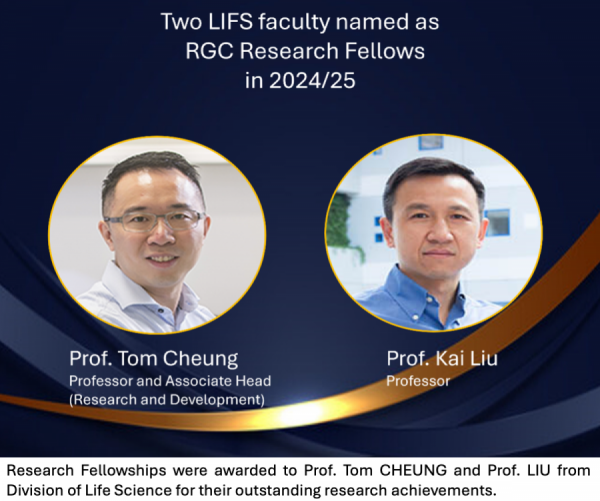
Prof. Tom CHEUNG, Associate Head (Research and Development), Division of Life Science
Project title: Post-transcriptional regulation of muscle stem cell quiescence during physiological conditions and aging
Amount of Fellowship Grant: ~HKD 5.3 million
Abstract
With better healthcare and living conditions, humans are living longer, but aging is accompanied by poorer health span partly due to the aging-related deterioration in tissue functions. Muscle stem cells (MuSCs) are the adult stem cells of skeletal muscle, playing critical roles in maintaining tissue homeostasis and repair. MuSCs remain in a dormant state until they receive signals from external stimuli (e.g. muscle injury) to rapidly activate, proliferate, and differentiate to regenerate the injured muscle. However, this regenerative capacity is lost during aging, leading to loss of muscle mass, function, and capacity for repair. MuSC functions are under tight regulatory control through numerous pathways, which become dysregulated during aging. The Cheung laboratory is dedicated to understanding why MuSC functions are lost and developing interventions to restore their stem cell functions. This project will investigate how these mechanisms regulate MuSC functions and how aging may impact these pathways.
Prof. LIU Kai, Professor, Division of Life Science
Project title: Enhance locomotor recovery by transforming a complete spinal cord injury into an incomplete injury
Amount of Fellowship Grant: ~HKD 5.3 million
Abstract
Severe and long-lasting neurological deficits result from neurological injuries such as brain or spinal cord injury. Successful regeneration and reconnection of nerves has the potential to restore lost function. The team’s previous work on optic nerve injury and regeneration has led to a new approach to promote axonal regeneration and neurological recovery. They will apply this knowledge and methods to spinal cord injury. Recent research on spinal cord injury has shown that multiple descending tracts can regenerate across the lesion site, offering exciting opportunities to study the function of axonal pathways in the regeneration and repair of damaged neural circuits. The team aims to enhance functional recovery by combining various strategies and gain a deeper understanding of the cellular and molecular mechanisms involved in nerve fiber regeneration and functional connectivity. Successful completion of this project will improve our understanding of the fundamental processes that promote functional connectivity after central nervous system injury.
HKUST President Prof. Nancy IP said, “This marks another significant accomplishment of the University, shortly after we yielded impressive results in RGC’s Areas of Excellence and Theme-based Research Schemes. At HKUST, we are committed to attracting and nurturing top-tier research talents who are dedicated to making a pivotal impact on addressing global challenges.
HKUST Vice-President for Research and Development Prof. Tim CHENG also expressed delight at the faculty’s achievements. He said, “Thanks to these additional research funding and support from RGC, our faculty members can dedicate more time to their foundational research and nurturing the next generation of research talent. This is essential for the University to further our goal of making HKUST a powerhouse of innovation and achievement.”
The annual RFS and SRFS aim to provide continuous research support integrated with relief from teaching and administrative duties for a 5-year period to 10 outstanding mid-career researchers at the Associate Professor rank and 10 senior researchers at the full Professor rank at UGC-funded universities in Hong Kong. This initiative is designed to enable academics to focus on research and development, as well as the time and resources necessary to nurture the next generation of local research talents for Hong Kong.
For more information please see: